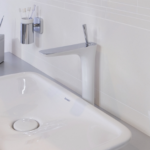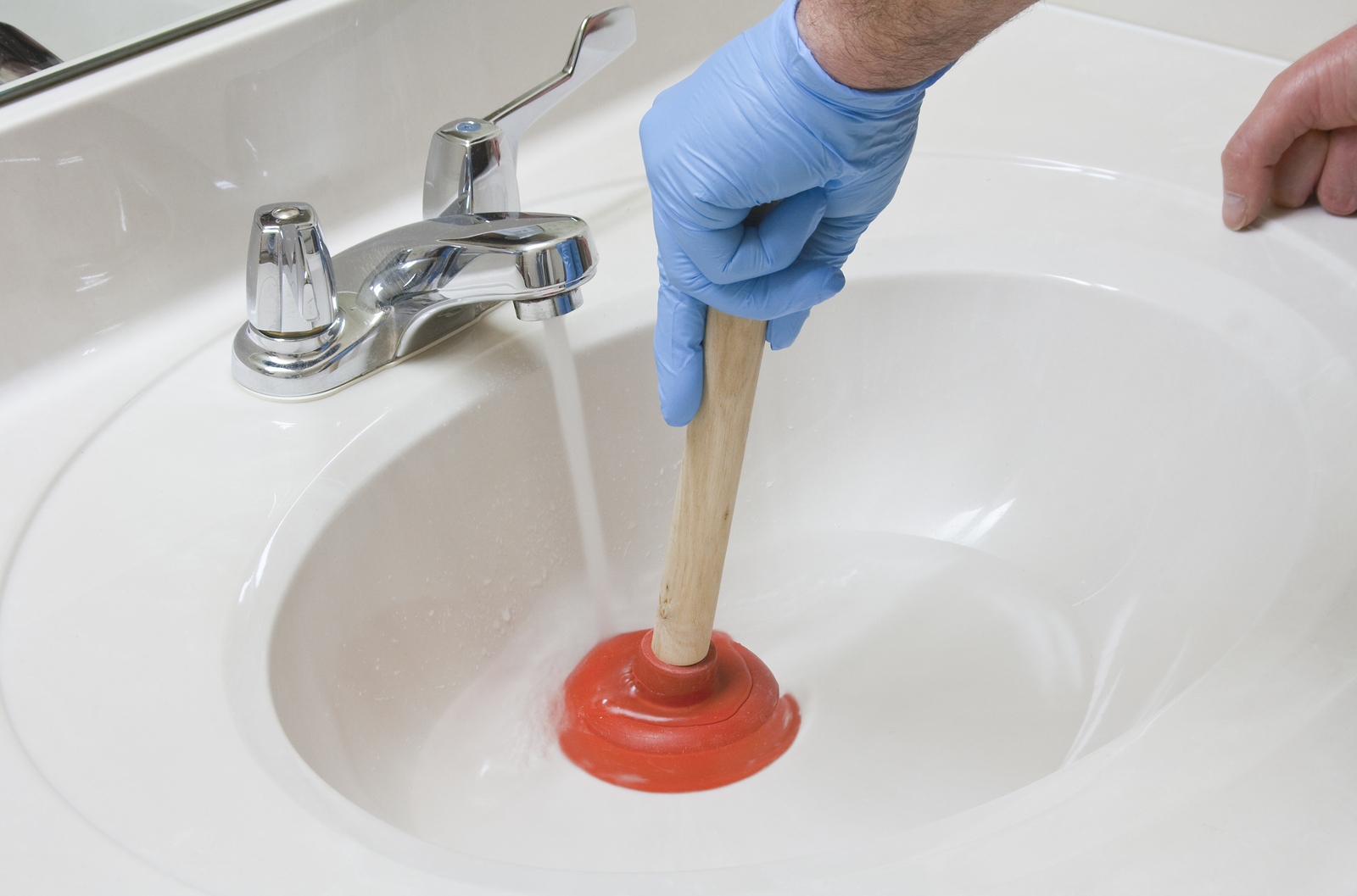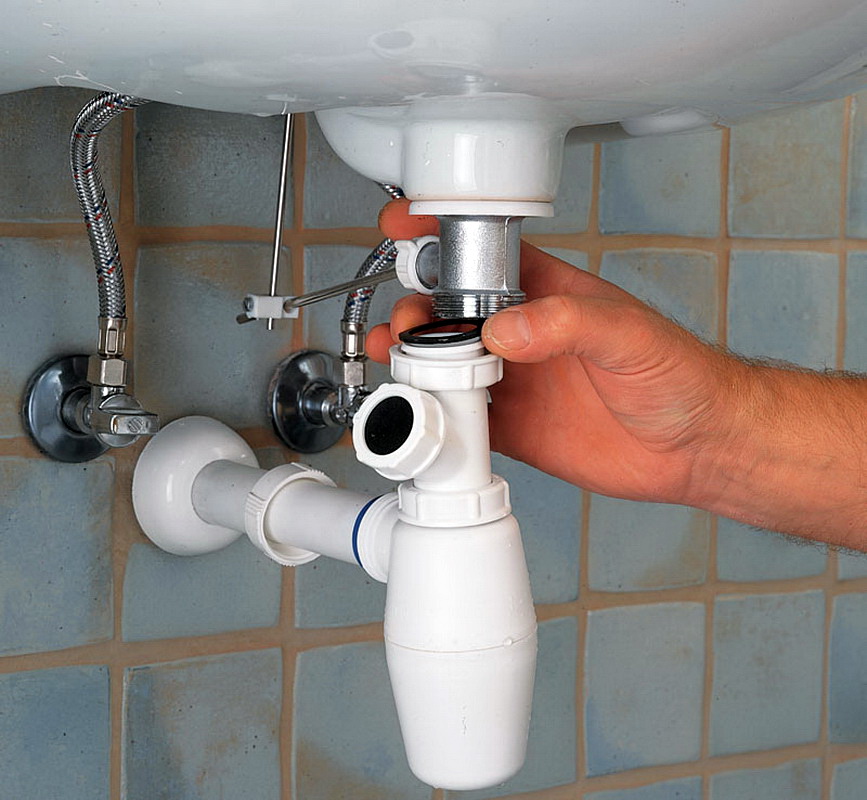Kitchen sink sizes
A sink is an item that maximally combines decorative and functional qualities. It simultaneously serves as decoration and the main working device. Even if the kitchen is equipped with a dishwasher, it is still impossible to do without a sink - food, hands, non-standard or large dishes, sponges and napkins for cleaning are washed in it.
The housewife spends more than half of her time at the sink. The health, performance and good mood of the home cook depend on its location, convenience and ergonomics. This is why choosing the size and design of your kitchen sink is so important.
The content of the article
Standard kitchen sinks
The dimensions of the usual mortise models are standardized and depend on the dimensions of the cabinets:
- 500x600 mm;
- 600x600 mm;
- 600x800 mm;
- 500x800 mm.
Model 600x800 or 500x800 can have two bowls or a large drying wing.
Dimensions of overhead sinks vary widely. Round usually with a diameter of up to 510 mm. Oval – up to 510x780 mm. Sinks with multiple bowls or complex shapes can be up to 800mm wide and up to 1250mm long. There are also larger sinks, but such models are usually not installed at home.
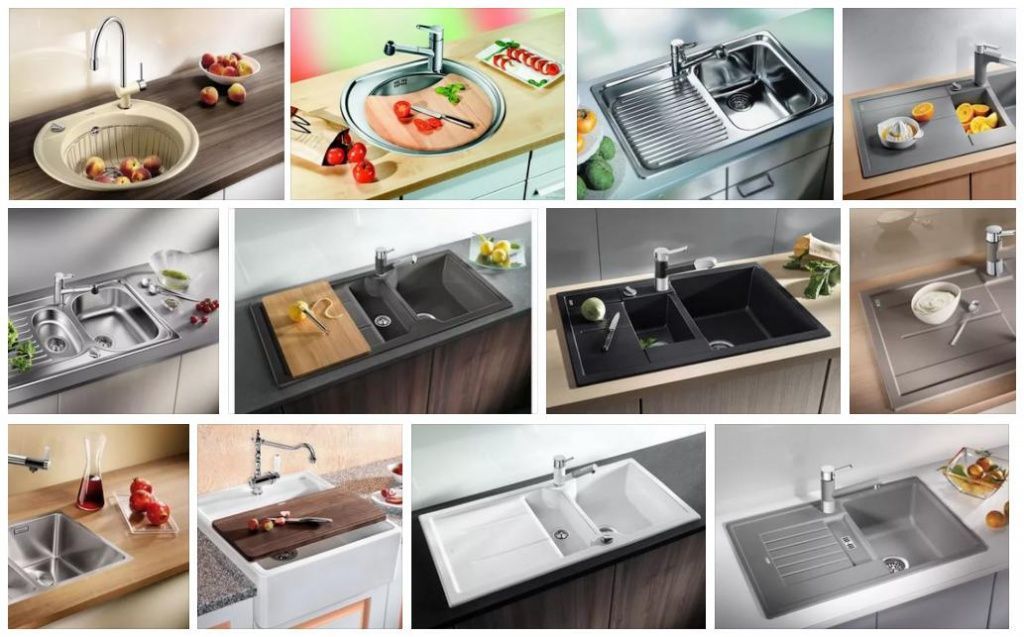
What influences the choice of the right size?
The choice of sink is determined by the size and layout of the kitchen, the design of the kitchen unit, the number of family members, and dietary habits (they cook a lot or prefer semi-finished products).
Important! First of all, they plan the location and size of the furniture, determine where the water supply will be and the place for the sink. Then, taking into account the allocated space, they determine what size sink can be placed on a floor cabinet or a dedicated area of a solid countertop above a row of kitchen cabinets. In any case, the dimensions of the installed sink cannot be larger than the countertop.
And only after that they decide on a sink: overhead or mortise. The overhead model is selected depending on the width and depth of the supporting cabinet. When choosing a mortise, they focus more on the overall dimensions of the kitchen and the family’s eating habits. For 1-2 people or if you have a dishwasher, you can choose a small sink, but if the family likes to cook, bake, or receive guests, it is better to choose a large design with several bowls.
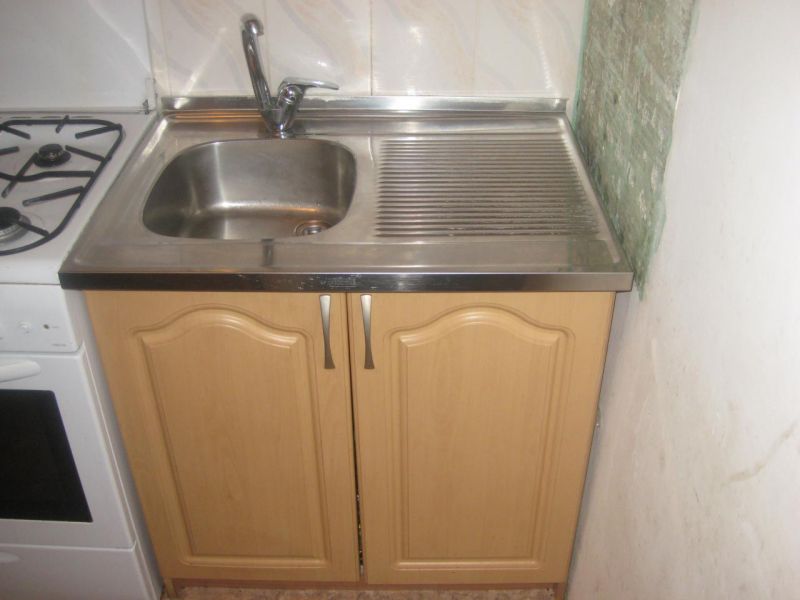
Overhead or mortise sink?
Sinks have two basic options:
- Invoice – traditional model. Installed on top of a cabinet instead of a tabletop. Its disadvantage is that water can get into the gap at the junction with the adjacent cabinet.
- Mortise (built-in) - installed on top, a cutout is made in the tabletop. The hole is covered with a small decorative protrusion of the sink and sealed using sealant and sealant, sometimes installed “flush”. The cutout does not require careful processing - it is simply not visible from above.
Interesting! There is a more difficult to install model - completely mortise.The top edge of the sink is flush with the countertop, the edge of the cutout must be very carefully sealed. There is another variety - an under-counter integrated sink. It is located below the level of the tabletop, as if recessed into the cabinet. Installation requires a special cabinet design, perfect surface treatment and careful sealing. Such sinks have great depth and can be of any shape, including fancy ones.

Number of bowls
The kitchen sink may have one, two or three bowls. The most common design is one that has one large and one small, or a double design (two sinks of the same size). In the second bowl, fruits, vegetables and herbs are usually washed or meat and fish are defrosted. Sometimes one of them is used to soak dried dishes. It is most convenient to use designs with three sinks, but they are the most bulky.
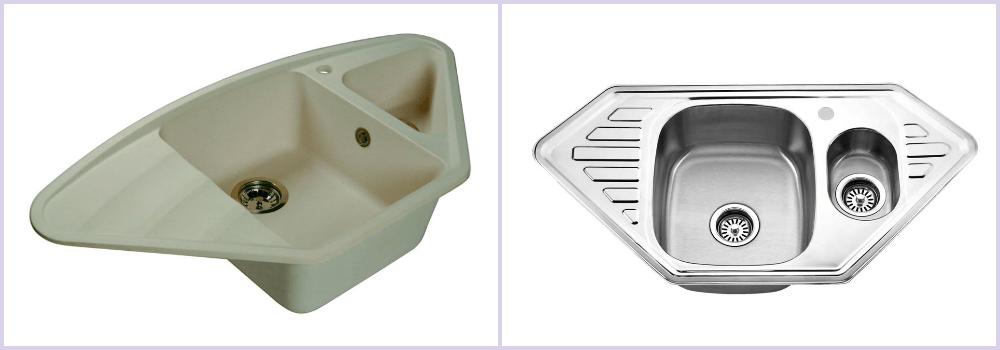
Sink shape
Overhead models have a rectangular or square shape. Mortise ones are more varied: along with the traditional round or oval (with a wing), there are square, rectangular, triangular. Corner models are often pentagonal or hexagonal. Designer ones can generally have any fantasy shape.
By the way! It is most convenient to use models with a round bowl and wings for drying dishes.
In expensive models, sinks are often supplemented with accessories - nets, containers with holes like a colander, cutting boards, etc.
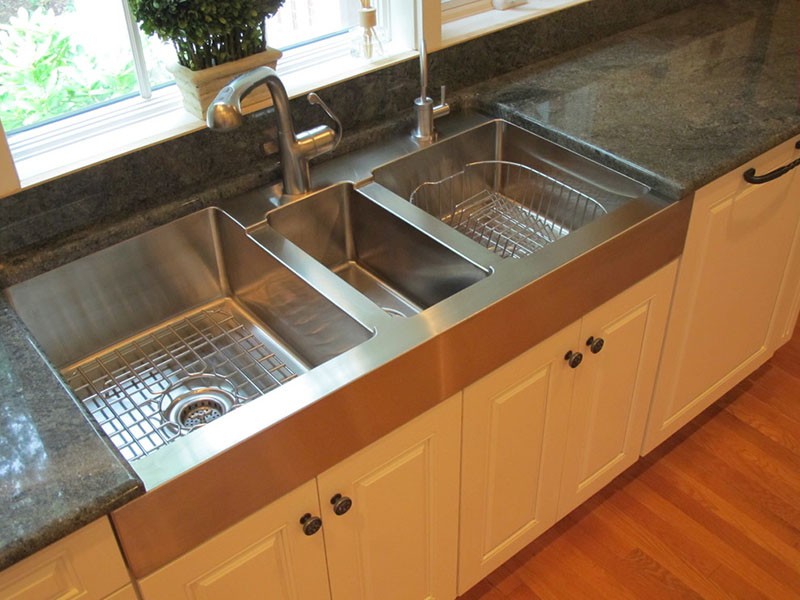
When purchasing a stainless steel sink, it is very important to choose a model made of material with a thickness of at least 1 mm, preferably 1.2-1.5 mm. Such a sink will last longer, will not sag, and dents will not appear on it when heavy dishes fall.
Required parameters
Basic – length, width, depth and bowl dimensions (diameter or length-width). The size determines how much space the sink will take up in the kitchen. It is the dimensions that determine whether this model will fit in a specific cabinet or on a designated space on the countertop for a sink (for example, from the wall to the stove).
Sink cabinet size
The width of the cabinet for the overhead model is 600 and 800 mm. Depth – 500 or 600 mm. For built-in models, the size may be smaller - 450 mm (for small round sinks).
For sinks with multiple bowls, the cabinet width reaches 800-900 mm and the depth is at least 600 mm. For corner sinks with wings or several bowls, the dimensions of the cabinet should be at least 850-900 mm. Example:
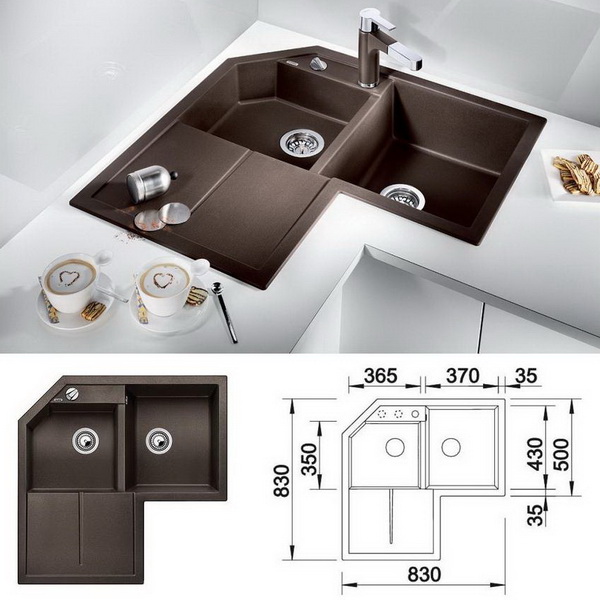
Sink depth
A very important parameter. It is he who determines how convenient it will be to wash dishes. The most common models have sizes from 160 to 200 mm. If the bowl is deeper, water splashes less in it and it is more convenient to wash large objects (pots and pans, baking sheets), you can install a high tap. But when working, you will have to bend over more and your back will get tired. Small models (less than 450 mm in diameter) have a depth of no more than 200 mm.
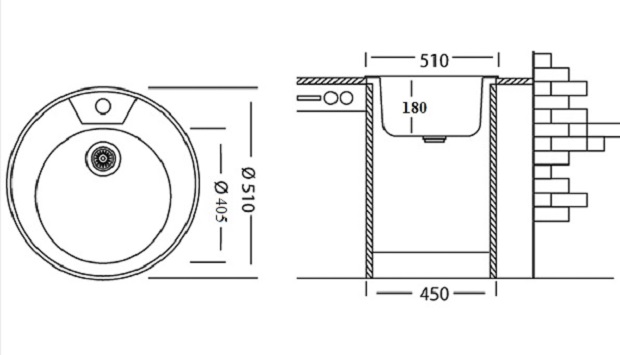
The size of the bowl itself and its “top”
Round bowls can have sizes from 300 to 510 mm. Rectangular - from 350x450 mm to 500x1250 mm. Square – up to 510x510 mm.
The thickness of the top of an overhead sink is usually selected based on the thickness of the countertop - 32 mm (standard). If the sink is mortise, then you should measure the width of the kitchen cabinet between the drawers and between the sides. You should be guided by the obtained parameters when taking external measurements of the bowl you are purchasing.. The thickness of the top in this case does not matter.
What else should you pay attention to?
If you are already certain about the number and design of kitchen cabinets, then you can choose a sink.The size of the overhead model exactly matches the dimensions of the cabinet-cabinet. The mortise must be at least 100 mm less than the depth and width of the cabinet. Causes:
- the design of the sink rests on the countertop, and you cannot cut too large an opening for the bowl - the countertop can simply break under the weight (especially of ceramic or stone) of the sink and dishes;
- a small distance (50 mm) from the wall and the edge of the cabinet on the side of the doors reduces splashing of clothes, floors, and wall aprons with dirty water and grease.



